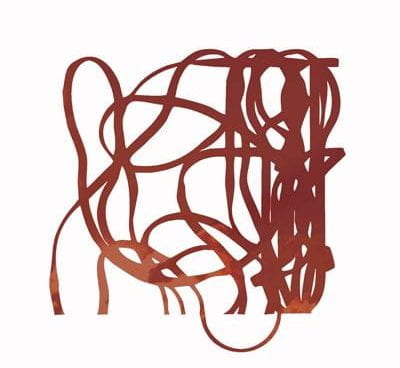Chinese water sleeve dance is a typical sort of Chinese classical and folk dance, as well as the foundation of today’s Chinese Ribbon Dance. In ancient China, People used to wear a kind of clothes with big baggy sleeves, which was known as Han Fu (汉服).
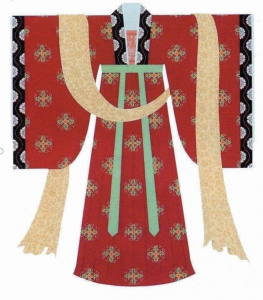
Photo credit: sjfzxm.com http://www.sjfzxm.com/global/en/296616.htmlhttps://www.sohu.com/a/227619467_388741
Wearing this long silky traditional attire led naturally to spontaneous flowing dance movements and the development of Chinese water sleeve dance. Many literary records about this dance form can be found in Chinese historical documents. Instances of an early form of long silk dance known as Bo Wu (帗舞) appeared as far as the Rites of the Zhou (周礼), Six Small Dances during the Zhou Dynasty (1046 BC – 256 BC).
This dance form played a vital role in ancient sacrificial ceremonies and is also regarded as the origin of Chinese water sleeve and long silk dance. Some stone portraits from Han Dynasty (202 BC ~ 8 AD) show rich images of early Chinese folk dancers with long silks elegantly formed into different shapes.
The first emperor of the Han Dynasty, Emperor Gaozu Han (born Bang Liu) favoured Chinese folk singing and folk dance thus these arts were introduced into the palace and flourished under his reign. One of his descendants, the seventh emperor of the Han Dynasty, Wudi Han (born Che Liu) set up Yue-Fu, which was an official institution specialising in the management of music and dances and incorporated music and dance into diplomatic activity at the time.
After many years performing this art form on national and international levels, Chinese silk dance slowly became influenced by neighbouring countries and cultures and was gradually given religious overtones. One of the most well-known forms of Chinese Long Silk dance is Dunhuang dance, which is also known as Chinese ribbon dance. This dance is represented in the 1000-year old Buddhist murals that appear in the Mogao Caves located in a desert along the former Silk-road in Dunhuang in northwestern China. The ancient Mogao Cave murals show many depictions of Feitian, a type of ethereal flying god that is depicted dancing with long colourful silk ribbons.
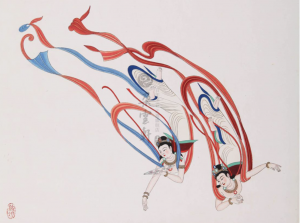
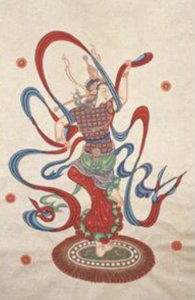
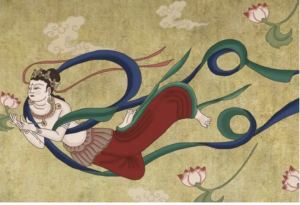
Based on the images of the Dunhuang murals, dance experts in today’s China have developed Chinese Ribbon Dance further and made it a major genre of contemporary Chinese classical dance.
In 2019, here at Goldsmiths Confucius Institute, we began the department’s very first Chinese ribbon dance short course in order to introduce this art form to Goldsmiths staff and students and the local community here in Lewisham.
In April 2022, Yiyun Li appeared on ITV’s Big Zuu’s Breakfast Show in order to introduce this art form on a national level.
References:
1《周礼·春官》
2 <The Art of Chinese Scarf and Silk Dance>, Luo Xueting
3 Technique Presentation of Long Silk Flying Apsaras and Aesthetic Research, SHI Min, WANG Xue
4 A Test of the Time of Emperor Wudi of the Han Dynasty, LONG Wenling
5 On the origin and characteristics of the Han nationality long silk dance, XU Li
Yiyun Li is a professional dancer, experienced dance teacher and creative choreographer who has worked in Chongqing No.47 College as a specialised dance teacher and for 5 years at Chongqing Broadcasting and Television Station as a choreographer.
Yiyun obtained the Gold Award of a performer in a professional group and Silver Award in performance for her self-choreographed dance piece Taste of Sichuan in the Third Shaanxi Province Lotus Dance Contest. She was also awarded the honour of Excellent Choreographer in 2012. Yiyun teaches on the departmental Outreach for Schools programme as well as our Asian Contemporary Dance and Chinese Folk Dance and Chinese Fan Dance short courses here at Goldsmiths Confucius Institute.

Chinese Dance Teacher at Goldsmiths Confucius Institute for Dance and Performance
